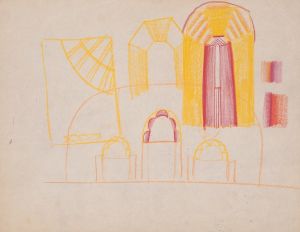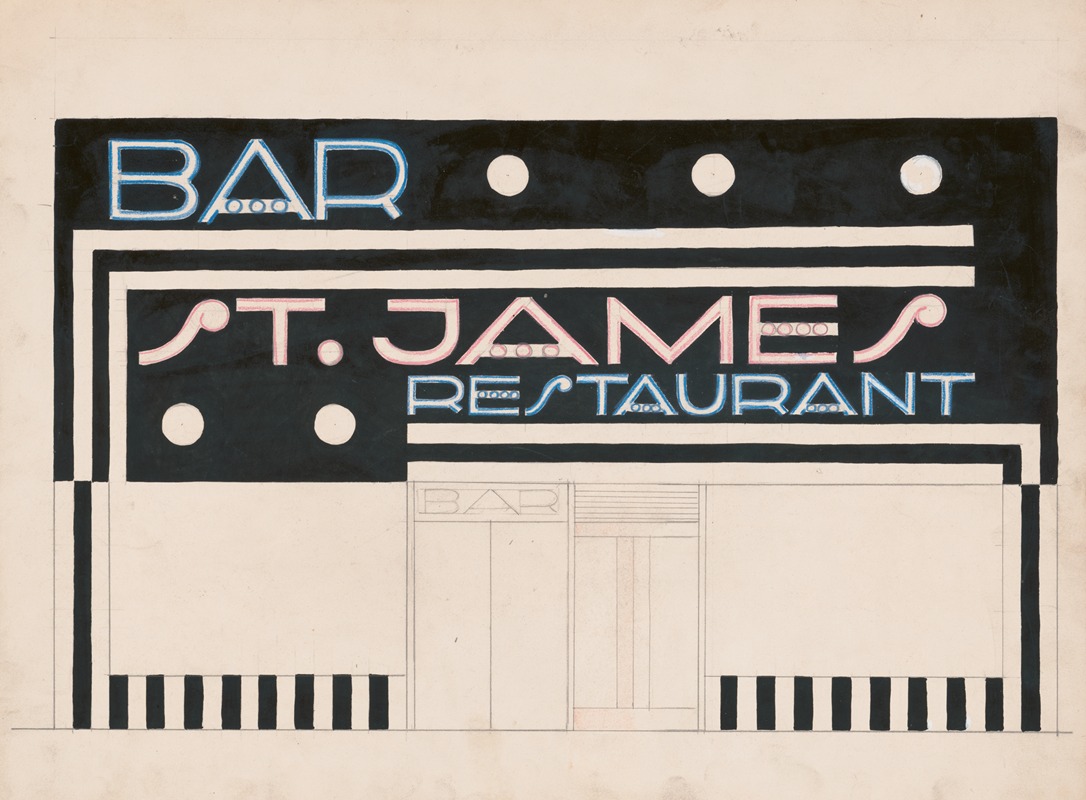
Designs and photographs for alterations to St. James Bar Restaurant, W. 181st St. and Broadway, New York, NY.] [Incomplete study of exterior elevation
A hand-painted replica of Winold Reiss’s masterpiece Designs and photographs for alterations to St. James Bar Restaurant, W. 181st St. and Broadway, New York, NY.] [Incomplete study of exterior elevation, meticulously crafted by professional artists to capture the true essence of the original. Each piece is created with museum-quality canvas and rare mineral pigments, carefully painted by experienced artists with delicate brushstrokes and rich, layered colors to perfectly recreate the texture of the original artwork. Unlike machine-printed reproductions, this hand-painted version brings the painting to life, infused with the artist’s emotions and skill in every stroke. Whether for personal collection or home decoration, it instantly elevates the artistic atmosphere of any space.
Winold Reiss, a German-American artist and designer, is known for his contributions to modernist art and design in the early 20th century, particularly in the United States. One of his works, titled Designs and photographs for alterations to St. James Bar Restaurant, W. 181st St. and Broadway, New York, NY: Incomplete study of exterior elevation, reflects his interest in architectural and decorative design. This piece is an incomplete study of the exterior elevation for the St. James Bar Restaurant, located at the intersection of West 181st Street and Broadway in New York City.
Reiss was renowned for his ability to blend European modernist aesthetics with American cultural themes, and his work often included vibrant colors, geometric patterns, and an emphasis on craftsmanship. While this particular study is incomplete, it provides insight into Reiss's design process and his approach to architectural ornamentation. The work likely aimed to enhance the visual appeal of the restaurant's exterior, aligning with the Art Deco and modernist trends of the time.
The St. James Bar Restaurant was situated in a bustling area of Manhattan, and its design would have been intended to attract attention and reflect the dynamic urban environment of early 20th-century New York City. Reiss's involvement in such a project underscores his versatility as an artist, as he worked across various mediums, including murals, interior design, and architectural studies.
Unfortunately, detailed information about the final execution of this design or the extent of Reiss's involvement in the completed project is not readily available. The incomplete nature of the study suggests that it may have been a preliminary concept or part of a larger series of designs that were never fully realized. Despite this, the work remains a valuable example of Reiss's artistic vision and his contributions to the cultural and architectural landscape of New York City.
Today, Winold Reiss is remembered for his innovative designs and his role in shaping modernist art and design in America. His works, including this incomplete study, are preserved in various archives and collections, offering a glimpse into his creative process and the artistic trends of his era.





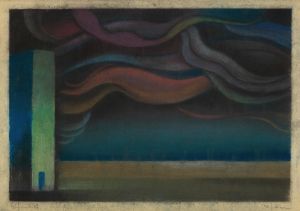
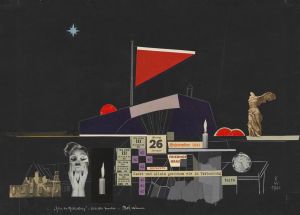

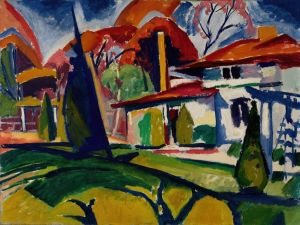
![Graphic designs for Fortune magazine.] [Study for cover with telephone lines spanning the globe](/imgs/249256/s/winold-reiss-graphic-designs-for-fortune-magazine-study-for-cover-with-telephone-lines-spanning-the-globe-766a580f.jpg)
![[Graphic designs for the Modern Art Collector Magazine.] [Medieval festival theme](/imgs/249267/s/winold-reiss-graphic-designs-for-the-modern-art-collector-magazine-medieval-festival-theme-e21959d.jpg)
![Design drawings for Community Coffee Shops, Wilkes-Barre, PA.] [Proposed wall treatment, interior elevation color study with bosky murals](/imgs/249275/s/winold-reiss-design-drawings-for-community-coffee-shops-wilkesbarre-pa-proposed-wall-treatment-interior-elevation-color-study-with-bosky-murals-1ff2a82a.jpg)
![Design for fine art print, ‘The Mad Dancer’.] [Woodcut print](/imgs/249286/s/winold-reiss-design-for-fine-art-print-the-mad-dancer-woodcut-print-c03b5ea2.jpg)
![Designs and photographs for alterations to St. James Bar Restaurant, W. 181 St. and New York, NY.] [Study of exterior elevation](/imgs/249306/s/winold-reiss-designs-and-photographs-for-alterations-to-st-james-bar-restaurant-w-181-st-and-new-york-ny-study-of-exterior-elevation-c23a0b8e.jpg)
![Designs and photographs for alterations to St. James Bar Restaurant, W. 181st St. and Broadway, New York, NY.] [Study of exterior elevation](/imgs/249309/s/winold-reiss-designs-and-photographs-for-alterations-to-st-james-bar-restaurant-w-181st-st-and-broadway-new-york-ny-study-of-exterior-elevation-81a59d40.jpg)
![Designs for staged commercial or trade exhibition displays of coal-fired water heaters and furniture.] [Perspective sketch in orange with rainbow edges](/imgs/249324/s/winold-reiss-designs-for-staged-commercial-or-trade-exhibition-displays-of-coalfired-water-heaters-and-furniture-perspective-sketch-in-orange-with-rainbow-edges-7c407bf3.jpg)
![esigns and photographs for alterations to St. James Bar Restaurant, W. 181st St. and Broadway, New York, NY.] [Plan for restaurant layout of booths and tables](/imgs/249342/s/winold-reiss-esigns-and-photographs-for-alterations-to-st-james-bar-restaurant-w-181st-st-and-broadway-new-york-ny-plan-for-restaurant-layout-of-booths-and-tables-65bfed35.jpg)
![Graphic design drawings for Barricini Candy packages.] [Study, wheel pattern lid design in blue, yellow, and gold](/imgs/249348/s/winold-reiss-graphic-design-drawings-for-barricini-candy-packages-study-wheel-pattern-lid-design-in-blue-yellow-and-gold-18aaf641.jpg)
